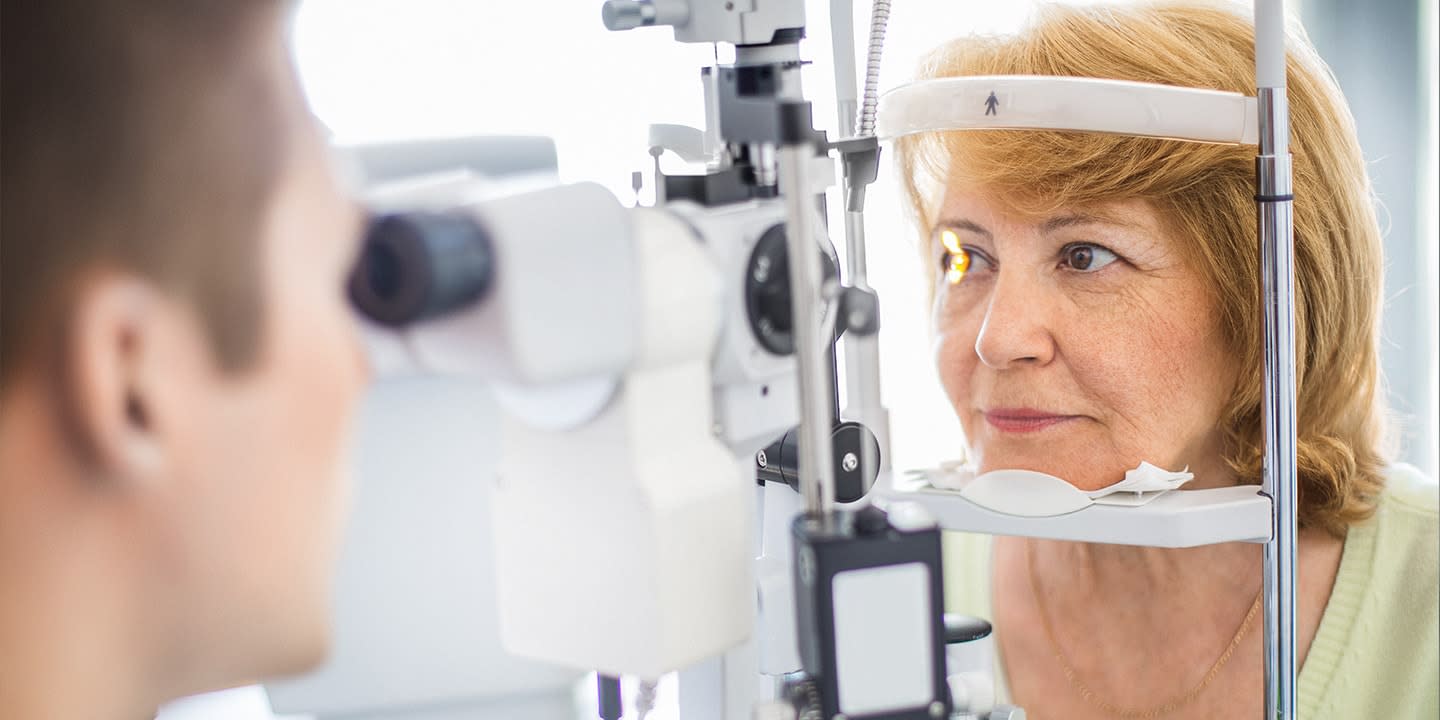
As our bodies age, the risk of developing certain diseases increases. One of the most common in older people is Age-related macular degeneration (AMD), a chronic eye disease that affects 1 in 7 Australians over the age of 50. The risk of developing AMD may be reduced if the right measures are taken. Regular eye examinations are an essential way to reduce your risk of AMD, and these can be easily booked through EyeHealth1st.com
What is macular disease?
Macular disease refers to a group of eye conditions affecting the macula, the part of the retina responsible for central vision. Macular disease causes loss of sight in the central line of vision while leaving the peripheral vision intact.
The most common macular disease is AMD. While the disease is painless and often does not show symptoms in the earlier stages, it can be progressive and lead to severe vision loss and blindness if not detected or managed early enough. In fact, in Australia, over 50% of cases of severe vision loss and blindness are due to this disease. People with vision loss from AMD can find themselves unable to drive, read and even recognise other people’s faces.
Here’s an example of what someone suffering from AMD may see.

Stages of AMD
AMD is classified into early, intermediate and late stages. In the early and intermediate stages there is a gradual build-up of drusen, which is a waste product under the retina. Progression to late stage may occur, however progression in each eye can differ.
Late stage is divided into atrophic (‘dry’) AMD where there is a gradual atrophying (or dying) of the retinal cells; and the more severe neovascular (‘wet’) AMD where there is leakage of blood and fluid from blood vessels that grow under the macula. The late stage “wet” form can be much more aggressive and devastating in its effect on vision. While the disease can be managed if detected early, there is no cure. This is why prevention is so important.
Do you need to see an Optometrist? Book your next appointment now
Here are a few simple steps you can take to help reduce your risk of AMD.
1. Regular eye examinations
Preventing or detecting AMD in the earlier stages is the most effective way to safeguard your vision. It is recommended to have a comprehensive eye examination (including a check of the macula) every two years (every year if over 65), or as advised by your optometrist, to look for early signs of AMD. Book an appointment with an optometrist now!

2. Don’t smoke
Smoking is bad for your overall health, and this includes your eyes. Smokers are three to four times more likely to develop AMD. You’re also likely to develop the disease up to five to ten years earlier than non-smokers. Smoking is a modifiable risk factor, which means your risk of AMD decreases if you stop smoking.

3. Regular exercise
Maintaining an active lifestyle and regular exercise is a key factor in preventing many diseases, including AMD. According to the British Journal of Ophthalmology , highly active individuals are less likely to develop the disease, which means walking at least three kilometres a day, an average of three times per week.

Do you need to see an Optometrist? Book your next appointment now
4.
There’s a reason parents want their kids to eat more veggies – they’re good for us and they have many long-term health benefits. Eating more vegetables, particularly green, leafy ones such as spinach and kale, which are rich in nutrients, has been shown to significantly reduce your risk of developing AMD . In fact, a study sponsored by the National Institutes of Health revealed that people who have diets rich in dark green leafy vegetables such as kale and spinach are at a 43% lower risk of developing AMD . So, make like Popeye and eat your spinach!
Eat more fish, especially oily fish such as salmon, anchovies and mackerel, which are rich in Omega-3 fatty acids. An increase in Omega-3 in your diet can help prevent the development of AMD. In fact, Macular Disease Foundation Australia recommends eating fish 2-3 times a week . Multiple studies, including one from the University of Sydney, have shown that eating fish at least once a week is associated with a 31% reduced risk of early AMD.
Similar to leafy greens and fish, fruits and nuts are also great for the eyes. Macular Disease Foundation Australia recommends eating fresh fruit daily and a handful of nuts every week. Fruit and nuts contain nutrients such as Vitamins C and E, Zinc and Selenium, which can help to lower your risk of AMD. It’s also important to limit your intake of fats and choose low GI foods.
For more information on the nutrients that aid in the prevention of AMD refer to Macular Disease Foundation Australia .

5. Protect your eyes from the sun
While the link between AMD and sunlight exposure is not yet conclusive, protecting your eyes from UV light is highly recommended. Always wear sunglasses and adequate protection from the sun when outdoors.

6. Use an Amsler grid
An Amsler grid is a simple tool that helps you monitor your vision at home. Anyone 50 years or older should start using an Amsler grid to check regularly, once a week, for changes in vision. While useful, this tool should not replace regular eye examinations with a qualified eye health professional.
To find out more about Amsler grids, visit Macular Disease Foundation Australia . To order a free Amsler grid, call the MDFA on the National Helpline 1800 111 709.
As Australia’s biggest optometry booking platform, EyeHealth1st makes it easy and convenient for you to find and book an eye health appointment in your local area . Plus, the site also has a wealth of information about the risks and prevention methods for all major eye diseases, AMD included.